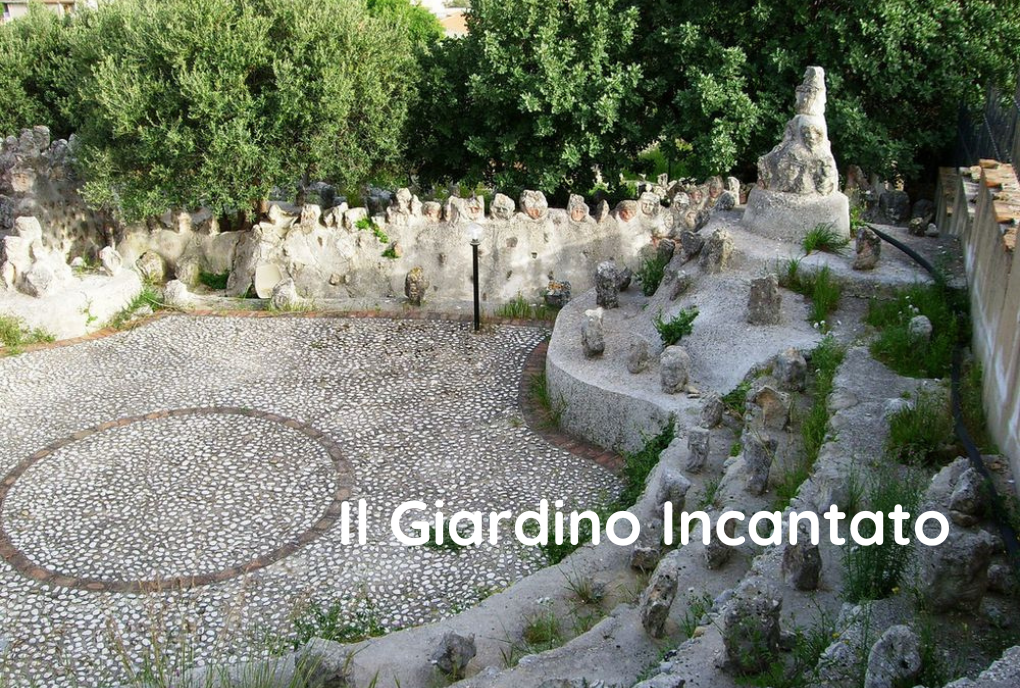
The Enchanted Garden of Sciacca: between madness and dreams
Not far from Agrigento and the beautiful thermal baths of Sciacca, stands a peculiar garden composed of rather unusual sculptures. Over 3,000 stone heads, the brainchild of a local sculptor.
For some people this place is called the Enchanted Garden, but for others it is the Enchanted Castle or the Garden of Heads. To understand this extravagant museum in the city of Sciacca, we need to start very far back. From stories of poverty, migration and that healthy craziness that brings flashes of genius. A living experience in Sicily to be taken as a break from real life to enter a timeless fairy tale.
Once upon a time…
A man, Filippo Bentivegna, whose hands made his dreams come true: he transformed the images he dreamed of into tangible objects. Why he was obsessed with the heads is unclear, and it is not even known if they were visions.
Filippo Bentivegna was born in Sciacca in 1888, the son of a humble family tried by poverty. At the age of 25, he decided to emigrate to the United States to look for work like his brothers and managed to find it at a construction site. A few years later, an accident caused him to suffer a head injury, possibly from work or a fight, and he was in a coma for several months.
When he awoke, he found himself incapacitated with severe amnesia. For this, he was repatriated in 1919, for which he was considered a deserter, as he could not go to fight World War I, and they locked him up in prison. The psychiatric examination he underwent before entering jail revealed his mental disorders due to the accident.
When he was sent back to live in his country, Philip bought a property in the countryside at the foot of Mount Kronio. He lived on a disability pension, spending his days collecting tuff stones from the fields and shaping them into his visions, voices and images that haunted him every night.
The Enchanted Garden
“Master Philip” when he died in 1967 left the garden with over 3,000 heads in neglect. Many foreign artists passing through Sciacca for tourism or for the healing spa had discovered this amazing sculptor and began to talk about him abroad. The land was reclaimed by the municipality and later by a cooperative that is still giving tours now. To date, it is the second most visited monument in the province after the world-famous
Valley of the Temples.
For the locals it is called the Castle, because so many stone heads have also been placed on top of the dry stone walls that from a distance they look like battlements. The name is a tribute to Bentivegna, who called himself “excellence” and spoke of his farm fund as an independent kingdom.
Rediscovering the Enchanted Garden
It is thanks to tourism that the Enchanted Garden has been rediscovered from the 1980s and 1990s until today. The traveler is amazed to arrive at the Garden thinking he will find a Castle. In fact, the space of this fund is open air, devoid of buildings except for the house where Master Philip lived.
As you walk along the paths, you will encounter heads laid on the stone steps of an improvised amphitheater, others emerging from the vegetation, still others arranged pyramid-like by concrete pours, or emerging from tufa boulders. The feelings one has when visiting this monument are diverse, ranging from wonderment to sorrow for the very lonely life of this artist. Finally, one is amazed at the thought that a sick man has accomplished all this.
The city of Sciacca has added this tourist element to the many it still offers outsiders such as Carnival in February, spas, beaches with fantastic sea and resorts in summer.
How to get to the Enchanted Garden
To get to Sciacca, the nearest airport is Palermo’s Falcone&Borsellino. Several buses leave from here bound for the city.
By car, from Palermo the shortest route is State Highway 624, which leads to the junction with the southern coastal road SS 115.
From Catania follow the A19 highway to Enna and then take state roads !!7, 122, 626, 640 in the direction of Agrigento.
The Garden is open daily from 9 am to 1 pm and in the afternoon from 4 pm to 8 pm. For more information, you can visit the museum’s website directly here.
Giulia Nari
Opening photo by Sicilia Bella





